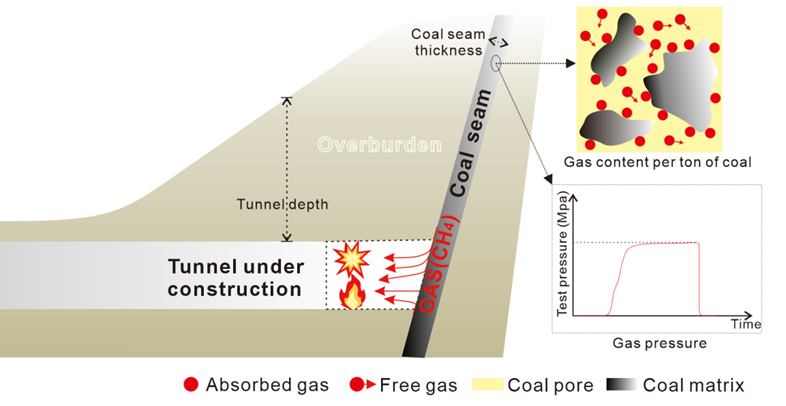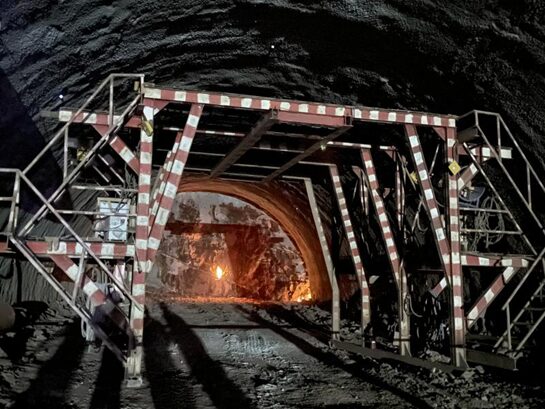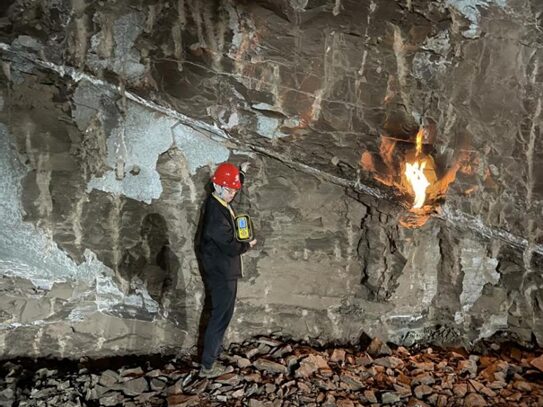Prediction of gas hazard in coal stratum tunnels based on improved snake optimizer and support vector machine
Coal seam gas explosions are among the most destructive geological hazards in underground engineering. Owing to its toxicity and high flammability, gas accumulation in confined tunnel spaces can readily trigger combustion–explosion accidents, resulting in severe casualties and equipment damage. Existing safety measures, such as ventilation, drainage, and online monitoring, are typically activated only when danger is imminent or after a disaster has already occurred, leaving workers with minimal response time and little margin for error, thereby failing to ensure construction safety. This underscores the urgent need for risk assessment and proactive prediction during the investigation stage. Nevertheless, systematic and effective research in this area remains limited. To bridge this gap, this study proposes an Improved Snake Optimizer–Support Vector Machine (ISO-SVM) method for gas disaster prediction, enabling accurate classification of hazard levels and offering more reliable decision support for tunnel construction.
First, based on field tests and geological investigations, a database of 80 real gas tunnel cases was established using gas pressure, gas content per ton of coal, tunnel burial depth, and coal seam thickness as evaluation indicators for model training and validation. To enhance classification performance, we improved the Snake Optimizer (SO) algorithm with five strategies to strengthen its global search ability, and systematically evaluated its performance using standard benchmark functions. Finally, the improved SO was integrated with a Support Vector Machine (SVM) to construct the ISO-SVM model for gas outburst prediction.
The model was systematically assessed through five-fold cross-validation and compared with various mainstream machine learning models, demonstrating that ISO-SVM achieved the highest prediction accuracy. Moreover, when benchmarked against international standards that rely solely on concentration monitoring, ISO-SVM exhibited superior discriminative capability, effectively overcoming the limitations of traditional single-indicator approaches. The model was further applied to four ongoing tunnel projects in Sichuan and Yunnan, China, where the predicted hazard levels were consistent with actual disaster levels, fully verifying its practicality and applicability in gas disaster risk assessment. This provides significant potential for reducing casualties and property losses.
Future research should focus on the prediction of non-coal-derived gas with higher randomness and uncertainty (e.g., coastal biogenic gas and mantle-derived magmatic gas), in order to ensure construction safety under increasingly complex environments amid the global surge in infrastructure development.

Schematic Diagram of Gas Outburst and Disaster Impact Indicators (Tunnel depth, Coal-seam thickness, Gas
pressure, and Gas content per ton of coal) when Tunnel Passes through Coal Seam

A combustion incident during tunnel construction forced work to halt

A researcher is conducting field testing work
Liu, Y., Su, P., Sasaki, J., Lei, M., Xiao, D., Liu, J. Prediction of gas hazard in coal stratum tunnels based on improved snake optimizer and support vector machine. Bulletin of Engineering Geology and the Environment, 84, 453, 2025. DOI

